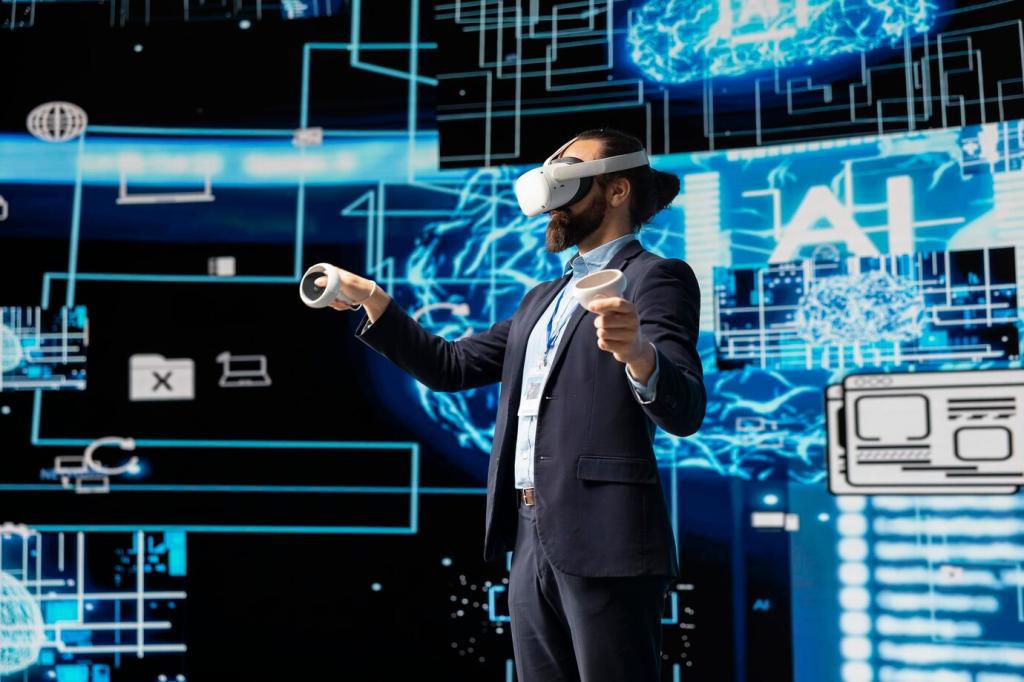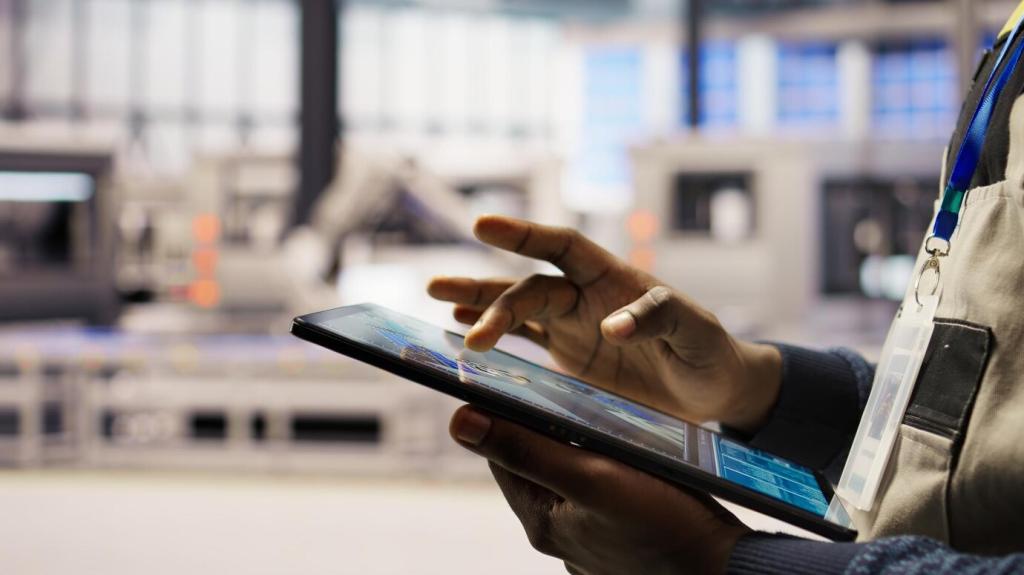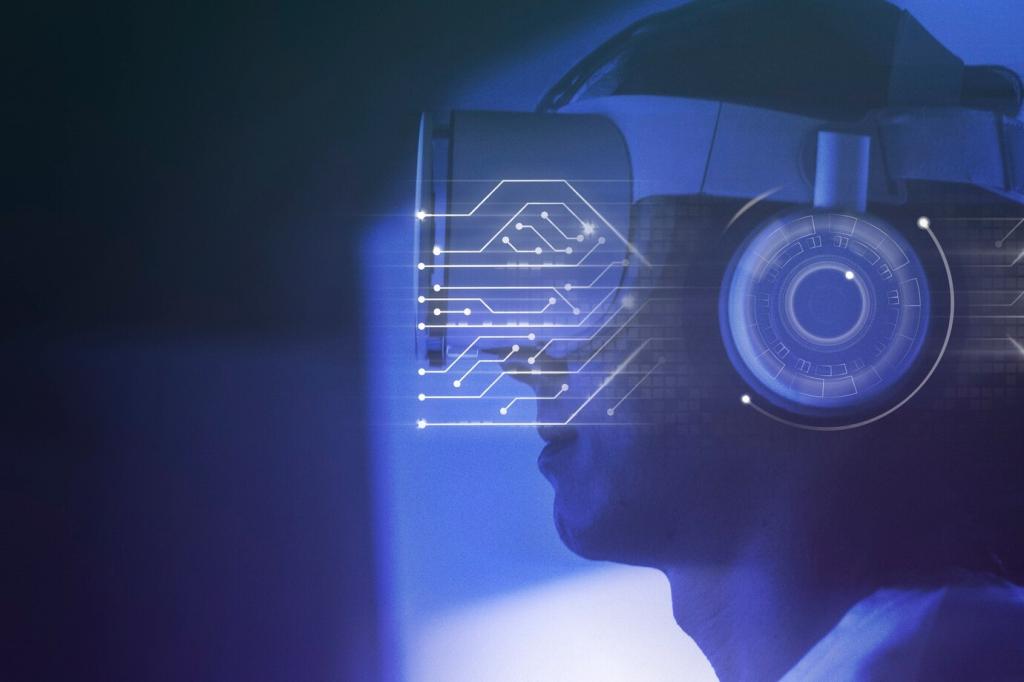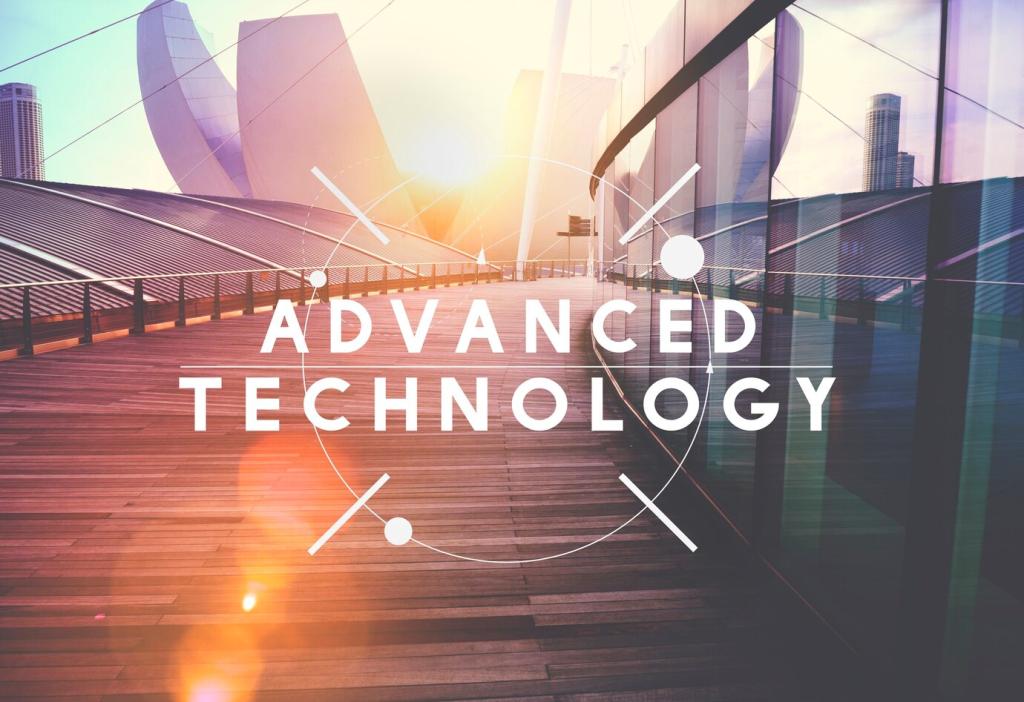
Chosen Theme: Rise of Virtual Reality Technologies and Applications
Step into the surge of Virtual Reality—where fast-moving hardware, bold design, and real-world use cases collide. We explore how VR is reshaping work, learning, health, and play. If the topic thrills you too, subscribe and tell us which VR moment changed your perspective.
From Early Prototypes to Everyday Headsets
Crisper displays, improved lenses, and wider fields of view reduce eye strain while deepening immersion. That first moment you read tiny text clearly in VR feels magical—comment if clarity finally convinced you VR had matured enough for real work and study.


Healthcare Transformations with VR
VR allows controlled exposure to triggers with safety and precision, helping patients gradually regain confidence. Therapists can adjust intensity in real time, ensuring support at every step. Would you consider VR-based therapy yourself? Your perspective could guide someone’s first step.
Learning and Training Without Walls
When learners manipulate molecules, engines, or ecosystems with their hands, abstract concepts become tangible. Spatial context aids recall, turning facts into lived experiences. Would your learners benefit from collaborative labs in VR? Share your scenario and we’ll suggest proven activity patterns.
Learning and Training Without Walls
High-risk training gains realism without danger: lockout-tagout sequences, hazard recognition, and emergency drills can be practiced repeatedly. Trainees receive immediate feedback on steps missed. What would you simulate first in your workplace, and how would you measure real-world transfer?


Designing for Presence, Comfort, and Flow
Motion Choices That Tame Nausea
Teleport, dash, arm-swinging, and comfort vignettes each serve specific experiences. Matching locomotion to task reduces discomfort dramatically. What movement style best fits your app’s purpose, and how do you onboard newcomers without overwhelming them in the first minute?
Hands, Controllers, and Natural Interactions
Hand tracking feels magical for pointing and grabbing, while controllers excel at precision and haptics. Clear affordances and subtle audio cues teach interactions quickly. Tell us your favorite interaction pattern and why it kept users in a focused, playful flow.
Accessibility and Inclusive Design
Seated modes, adjustable heights, color-safe palettes, subtitles, and remappable controls open doors for more people. Accessibility is not a feature; it is quality. Share your accessibility checklist, and subscribe for our downloadable template tailored to VR testing sessions.
Building Worlds: Tools, Pipelines, and Craft
Unity and Unreal offer strong VR foundations: scene graph tools, XR plugins, and performance profilers. Rapidly iterate on core loops before polishing. What vertical slice do you prototype first—interaction, locomotion, or lighting—and how do you validate it with real users early?
Building Worlds: Tools, Pipelines, and Craft
Scanning real spaces creates authenticity, while procedural tools fill gaps with scale. Hybrid workflows balance fidelity and performance. Have you blended scans with hand-authored art? Tell us how you kept draw calls, texture sizes, and lightmaps under strict budgets.


The Social Layer: Work, Play, and Co-Presence
Meetings That Feel Like Making
Whiteboards, sticky notes, and 3D sketches let teams ideate beyond flat screens. Persistent rooms hold your artifacts between sessions. If your team is hybrid, how would VR reshape weekly rituals—standups, retros, or brainstorms—so everyone contributes with equal presence?


Identity, Avatars, and Expression
Avatars convey mood through posture, gestures, and eye cues. Inclusive customization builds belonging. What matters most to you—realism, stylization, or privacy-preserving anonymity—and how do those choices change the tone of your community spaces day to day?
What’s Next: Mixed Reality, Standards, and Ethics
High-quality passthrough enables anchored interfaces, room-aware gameplay, and safer boundaries. Mixed reality can integrate your desk, keyboard, and friends into shared scenes. Would you prefer fully virtual spaces or context-rich rooms? Tell us how you balance focus and awareness.
What’s Next: Mixed Reality, Standards, and Ethics
OpenXR helps apps target multiple devices with one API, encouraging healthier ecosystems and faster innovation. If you ship across platforms, what’s your biggest portability pain point today, and how could standards reduce rework for input, rendering, and store requirements?
